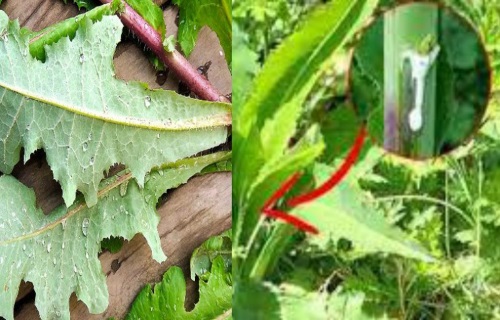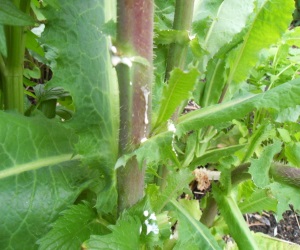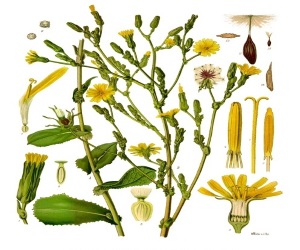Wild Lettuce The Best Natural Painkiller Similar To Morphine That Grows In Your Backyard
Wild Lettuce The Best Natural Painkiller Similar To Morphine That Grows In Your Backyard
The origins of Wild lettuce are traced back to ancient Egypt where hieroglyphics often depict Min, a fertility god, with the plant. It was believed to be an aphrodisiac and psychoactive substance. Today Wild lettuce may be found growing in southern parts of the United States and across central and southern Europe. It grows in well-drained sandy soils around fields, vacant lots and roadsides.
This relaxing herb can be beneficial for people needing help to get to sleep, calm restlessness or anxiety, and even as an aid when overcoming tobacco and cannabis habits.
Wild lettuce is used for whooping cough, asthma, urinary tract problems, cough, trouble sleeping (insomnia), restlessness, excitability in children, painful menstrual periods, excessive sex drive in women (nymphomania), muscular or joint pains, poor circulation, swollen genitals in men (priapism), and as an opium substitute in cough preparations.
The seed oil is used for “hardening of the arteries” (atherosclerosis) and as a substitute for wheat germ oil.
Some people apply wild lettuce latex directly to the skin to kill germs.
Some people inhale wild lettuce for a recreational “high” or hallucinogenic effect.
How does it work? Wild lettuce has calming, relaxing, and pain relieving effects.
This milky sap contains sesquiterpene lactones, which are essentially the active chemicals responsible for its opiate and pain relieving properties. According to one study, just a 30 mg/kg mg dose of lactucopicrin, the active compound, is comparable to a 60 mg/kg dose of ibuprofen .
Applying wild lettuce directly to the skin can cause irritation. Large amounts can cause sweating, fast heartbeat, pupil dilation, dizziness, ringing in the ears, vision changes, sedation, breathing difficulty, and death.
Enlarged prostate (benign prostatic hyperplasia, BPH): Don’t use wild lettuce if you have this condition. It contains a chemical that can harm people who have trouble urinating.
Allergy to ragweed and related plants: Wild lettuce may cause an allergic reaction in people who are sensitive to the Asteraceae/Compositae family. Members of this family include ragweed, chrysanthemums, marigolds, daisies, and many others. If you have allergies, be sure to check with your healthcare provider before taking wild lettuce.
Narrow-angle glaucoma: Don’t use wild lettuce if you have this eye condition. It contains a chemical that might make glaucoma worse.
Surgery: Wild lettuce can affect the central nervous system. There is a concern that it might cause too much sleepiness if it is taken along with anesthesia and other nerve-numbing medications used during and after surgery. Stop using wild lettuce at least 2 weeks before a scheduled surgery.
Herbs and other natural remedies can be as effective as traditional treatments, often without the same negative side effects,” says Roberta Lee, MD, medical director of the Continuum Center for Health and Healing at Beth Israel Medical Center in New York City. Here are 10 super healers you’ll want to add to the all-natural section of your medicine cabinet—and even to your favorite recipes. Folding one or two of them into your cooking every day can yield big benefits.
Preparation Methods & Dosage :
When a stem or leaf from a wild Lettuce plant is broken or cut, it will bleed a thick milky sap. This sap can be made into an alcohol tincture, (Lactucarium) or the fresh leaves and flowering tops can be tinctured, or dried and made taken as teas,smoked or less often in capsule form.
Here’s how you can use it :
Typical Use:
RELATED : 24 Lost Gardening Tips from 100 Years Ago
One of the best reasons to use wild lettuce is because it numbs pain and by not introducing new complications to the equation. The side benefit is that it grows in your yard, rather than from your cold medicine cabinet.






Comments
Post a Comment